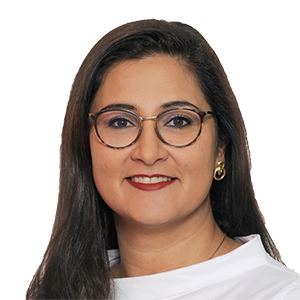Starting point
Standard essential patents (SEPs) are critical to standardised technologies. The best known SEPs are telecommunications standards such as UMTS, LTE, 5G and 6G, with the number of essential patents, patent holders and implementers soaring exponentially with each new generation. Other major patented standards on the Internet of Things are, for example, Bluetooth, RFID, Wi-Fi or HEVC.
Due to digital transformation, large parts of the industry and the services sector are impacted by SEPs. In April 2023, the European Commission estimated that there are 75,000 SEPs worldwide from 260 different holders, which are used by 3,800 companies doing business in the EU. A balance must be established between holders and implementers. The rapid technical progress in standardised technologies is built on tremendous research efforts. This can be capitalised on by requiring innovators in the standardisation process to license SEPs on “fair, reasonable and non-discriminatory” (FRAND) terms.
Innovative companies have a strong financial incentive to have their patented technologies integrated into the standard. Often too many patents are declared as standard-essential without being checked by the standardising bodies. The question also arises if it was permissible at all to grant the patents. These are the common issues arising when holders and implementers dispute the amount of FRAND royalty. However, SEPs regularly grant holders a dominant position which holders must observe when enforcing SEPs to avoid antitrust violation accusations. Given the countless number of holders, implementers often do not know whom to ask for a licence or have to fear that the number of licences required will make distribution of the products concerned uneconomical.
The high-profile patent infringement cases on smartphones and connected cars are just the tip of the large number of legal disputes that the EU Commission wants to reduce in future.
Final Draft of SEP Regulation
On April 27 2023, the Commission presented a final draft of a new SEP Regulation (COM(2023) 232 final) providing, among others, for the following measures to address the issues outlined above:
- Register of SEPs and electronic database
For more transparency, a public electronic register will be maintained at a new competence centre to be established at the European Union Intellectual Property Office (EUIPO) in Alicante. The register will list, amongst others things, information on the relevant standards, the SEPs (numbers, countries etc.), the holder and its’ EU representative, the technical specification of the standard and known licensing terms and conditions. Further useful information on the determination of standard essentiality and the determination of FRAND terms and conditions will be collected in databases. Registration of the SEPs on the register is to be a precondition for enforcing the patents in Europe.
- Aggregate royalty
At least two or more SEP holders may jointly notify the competence centre of the aggregate royalty for the SEPs covering a standard. The aggregate royalty may be revised subsequently. The most important information on the aggregate royalty is listed in the competence centre’s database, as are any revisions thereof, alongside the reasons for them. The process of jointly submitting an aggregate royalty may be facilitated by a conciliator who is appointed by the competence centre at the request of holders representing collectively at least 20 % of all SEPs for the standard. SEP holders or implementers may also request the competence centre for an expert opinion on the amount of a global aggregate royalty. For this, a process is envisaged in which both holders and implementers can participate. However,
the outcome is not binding.
- Essentiality checks of SEPs
The competence centre randomly checks whether declared SEPs are actually required for using the standard they were registered for. Every SEP holder or implementer may have up to 100 registered SEPs checked annually. Stakeholders - which, apart from SEP holders and implementers, include their representatives or associations representing the interests of SEP holders and implementers - may submit observations. If the evaluator has any doubt about the patent’s standard essentiality, the holder may request a re-examination by a second evaluator. Appeals are not provided for.
A maximum of one patent per patent family is checked. The result, which applies to the entire patent family, is added to database as a “reasoned opinion”. The percentage of sampled SEPs per SEP holder and per specific registered standard that successfully passed the essentiality check is also noted in the register. This enables conclusions to be drawn about the quality of the SEP portfolio of individual SEP holders. Whilst the outcome of the checks are not binding, the opinion is expected to have certain influence as an expert assessment in negotiations or conflicts vis-à-vis stakeholders, patent pools, authorities, courts or arbitrators.
- FRAND determination
The major element of the proposed SEP Regulation is the determination of FRAND terms and conditions. These are to be made prior to initiation of an SEP infringement claim by a holder or FRAND determination by a court at the request of implementers in member states. Within a maximum period of 9 months, the parties, if necessary with the assistance of a conciliator appointed by the competence centre, are to complete FRAND determination. If the FRAND determination process ends without the parties reaching a binding agreement, the conciliator will draw up a report containing the name of the parties, a confidential assessment of the FRAND determination, a confidential summary of the main issues of disagreement and a non-confidential methodology, and the conciliator's assessment of the determination of the FRAND terms and conditions. The confidential report is only accessible to the parties and the competence centre, while the non-confidential report is published in the database. Either party to the FRAND determination may file the report against the other party in any proceedings before a competent court of a member state, notwithstanding any procedural bar. This puts pressure on the parties to make constructive efforts to reach an agreement as the antitrust objection usually made in subsequent SEP court proceedings considers the efforts on the part of the parties.
However, the relevance of the FRAND determination regime is diluted as the Draft Regulation provides that, if parallel proceedings concerning a patent having, in substance, the same claims as the SEP are instituted before a court or authority in a third country (e.g. England, USA or China), the FRAND determination process is terminated at the request of a party. The responding party could thus effectively torpedo the process by bringing an action in a third country.
- SMEs
The Commission is concerned about the interests of micro, small and medium-sized enterprises (SMEs) that benefit from reduced fees for the services of the competence centre and free advice. SEP holders are encouraged to offer more favourable conditions for SMEs and businesses who use few patents, respectively. Whether the latter will prove helpful remains to be seen.
Criticism
Criticism of the new regime is varied and, in part, fierce with affected parties questioning if such a regulatory initiative was needed at all. While some SEP proceedings have attracted significant attention worldwide, there are comparatively few disputes given the immense number of SEPs and implementers. Many FRAND licence disputes are settled out of court. The creation of patent pools and licensing programmes of large SEP holders help facilitate this process.
The Draft Regulation does not address the different court rulings on the interpretation of patent claims in the various member states. Which of them should be applied to the essentiality check? How should one deal with the fact that when simply considering the statistics, a high percentage of SEPs (in part) prove to be invalid in court proceedings? A standard essentiality check without consideration of a patent’s validity does not appear to be expedient. Neither does limiting the check to a single member of a patent family only, given that each member may have greatly differing claims.
It has also been rightly pointed out that, while FRAND determination at the competence centre is compulsory prior to initiation of patent infringement proceedings by the SEP holder or FRAND determination by a court at the implementer’s request, this does not apply in the reverse case, i.e. prior to a negative declaratory action for non-infringement by the implementer or FRAND determination by a court at the SEP holder’s request. This is not a balanced approach. Is the SEP holder not permitted to respond - as is common practice - with a positive non-infringement action to the negative declaratory action for non-infringement?
Key concerns exist with respect to the pool of experts that would be needed at the EUIPO, which to date has only dealt with trademarks and designs. Despite the efforts to establish standard essentiality and the sums invested to date, it is unlikely that the competence centre will be able to check randomly a substantial number of SEPs for essentiality or handle potentially hundreds of requests made per SEP holders/implementers per year. Unlike in two-party court proceedings, countless stakeholders may submit opinions. FRAND determinations will be no less effortful. In national proceedings, both sides often submit many comprehensive opinions and documents which occupy courts for years. The competence centre will have no choice but to perform its tasks superficially otherwise there would immediately be a backlog which would burst the strict and limited time limits, e.g. the nine month period for the FRAND determination, provided for in the Regulation.
The bottleneck expected to arise in connection with the FRAND determination process could deter many SEP holders. Therefore, courts in the EU (particularly in Germany or the new European Unified Patent Court) could become less relevant in the context of FRAND proceedings. It was certainly not the intention behind the Draft Regulation that Europe would be left out of the determination of global FRAND terms and conditions in future.
Outlook
The Draft is currently in its first reading at the European Parliament. Given the partly justified criticism of the Draft and the unresolved uncertainties, it remains to be seen whether there will be changes in the further legislative process or whether the whole initiative will fail.





